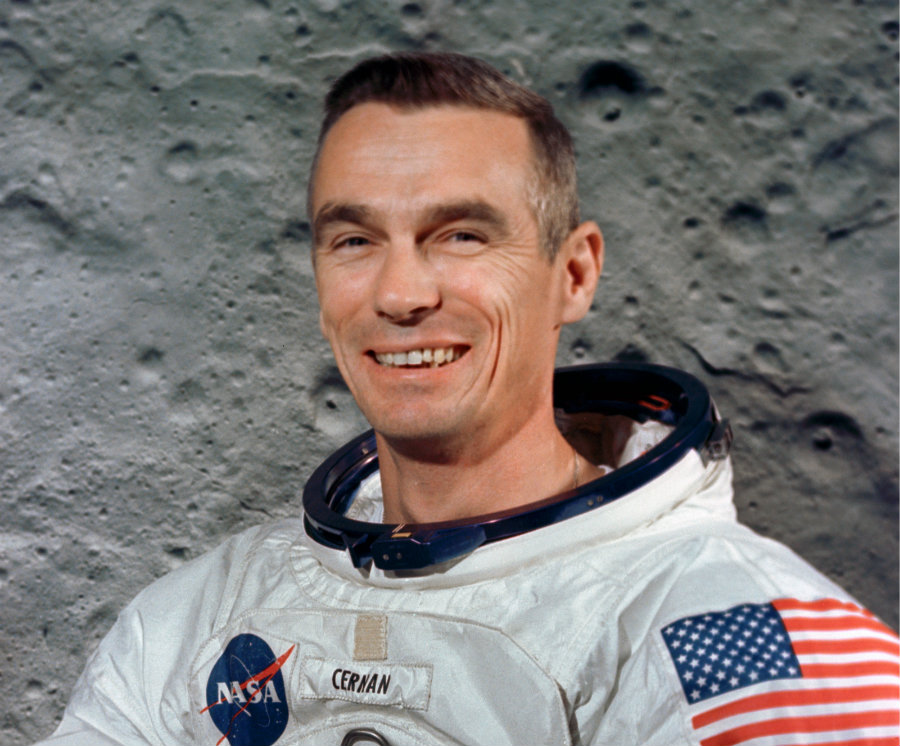NASA informed today that Eugene Cernan, the last astronaut to walk on the surface of the Moon, passed away at 82 years old, accompanied by his family. The agency published the information via Twitter, saying that they “are saddened by the loss of retired NASA astronaut Gene Cernan.”
Cernan was a former captain of the U.S. Navy who traveled to space a total of three times, two of them going to the Moon. Among his achievements, Cernan was the second American to walk in space and the last person to mark the Moon with his footprints.

NASA selected 14 astronauts for its missions back in October 1963, and Cernan was one of them. He was the pilot of the Geminis 9 mission along with Commander Thomas P. Stafford. The mission traveled to space for three days in June of 1966 and Cernan registered over two hours outside the orbiting probe.
The same year that the Apollo 11 landed on the Moon, and Neil Armstrong walked on it for the first time, Cernan was the astronaut in charge of piloting Apollo 10, a mission that consisted on the verification and qualification of the machine itself. The mission was able to confirm the performance, stability, and reliability to conduct the proper landing.
The Apollo 17 mission
The Apollo 17 was the last of the NASA’s lunar mission program and was performed on December 1972. With that travel, Cernan concluded his fantastic space exploration work.
That last Apollo mission marked different records regarding space flights, including the longest landing flight to the Moon, longest time a human team has conducted activities in it and the longest time orbiting it. It was the first night flight done by the NASA, and they were able to take lunar samples and deploy scientific instruments.
The whole crew was able to perform three successful excursions to craters near the investigation zone along with studies to the Taurus-Littrow mountains. They also managed to capture one of the most iconic pictures of the Earth, taken on December 7, 1972. Cernan later said that although the photo got famous, people did not appreciate the picture correctly.
“Apollo 17 built upon all of the other missions scientifically,” said Cernan in 2008, recalling the mission as the agency celebrated its 50th Anniversary. “We had a lunar rover, we were able to cover more ground than most of the other missions. We stayed there a little bit longer (three days). We went to a more challenging unique area in the mountains, to learn something about the history and the origin of the moon itself.”
In 1976, Cernan announced his retirement from the Navy Corps as well as ended his incredible NASA career. He then worked in private business and also was a commentator for flights of the space shuttle.
Source: NASA
